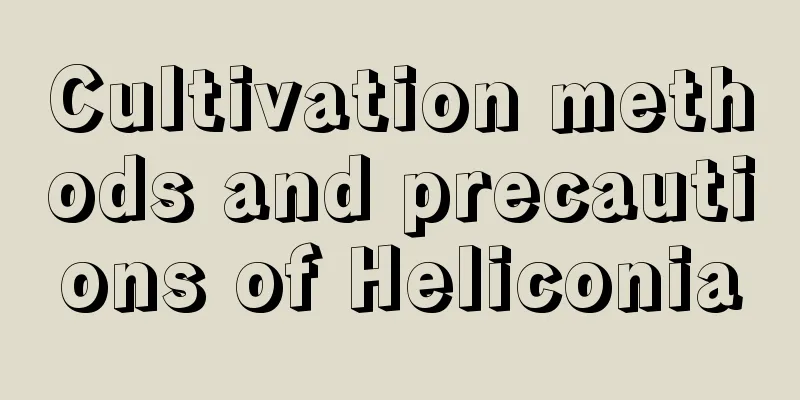Cultivation methods and precautions of Heliconia

1. Cultivation method of Heliconia1. Light. A sunny environment is the ideal growing environment for Scorpion Tail Banana. Under sufficient sunlight, the leaves of Scorpion Tail Banana will grow faster, which is also conducive to the development of its flower stems. 2. Water. Heliconia is a plant that likes a humid environment. Because of its large leaves and dense plants, its water evaporates relatively quickly, so its growth requires a soil and air environment with higher humidity. 3. Soil. The root system of the heliconia is very developed and it has lush, clustered leaves. This requires that the soil for planting should have good composting properties to avoid compaction. Generally, loose, fertile, clayey sandy soil is the best choice. 4. Fertilization. In terms of fertilization, Scorpion Tail Banana has no special requirements, but because of its characteristics such as many flower stems and fast-growing clustered leaves, its nutrient consumption will be relatively large, so the Scorpion Tail Banana will have a relatively large demand for fertilizer. 2. Precautions for the cultivation of heliconia1. Light. Although Heliconia prefers a growing environment with sufficient light, the summer sun is too strong, so you should be careful not to expose it to strong sunlight. Pay attention to watering and provide appropriate shade to prevent strong light from burning the leaves. 2. Growth environment. During the growth process of Heliconia, the soil and air environment must be maintained moist, so the soil can be kept moist for a long time by watering frequently, and the air humidity can also be maintained by spraying water. 3. Water. The soil for growing Heliconia requires good air permeability, so special care must be taken to prevent water accumulation. Especially in winter, because it is in a dormant period, the growth of the helicon banana will become slow, so you just need to keep the soil slightly moist. Excessive watering can easily lead to water accumulation, which can cause the roots of the Heliconia banana to rot. 4. Fertilization. The period of 20 to 25 days after planting the helicon banana is the time for its root system to recover. Fertilizer should not be applied at this time, which is not conducive to the recovery and growth of its root system. In severe cases, root rot may occur. |
<<: Can pine red plum bloom in winter?
>>: Breeding methods and precautions of Rhododendron ovata
Recommend
The fastest way to root wintersweet cuttings
Wintersweet cutting time The cutting time of wint...
Can egg liquid be used as fertilizer?
Egg liquid as fertilizer Egg liquid can be used a...
Why are the leaves of the golden diamond turning yellow? What should I do?
1. Excessive watering 1. Reason: Excessive wateri...
How much water should be used for the lucky tree?
1. How much water to use In the process of caring...
How to prune Caragana
Reasons for pruning First of all, we should know ...
When is the best time to propagate rose cuttings (how to propagate potted rose cuttings to achieve a high survival rate)
Which month is best for rose cuttings? There are ...
What is the best month to plant lily of the valley? What is the planting time and flowering time of lily of the valley?
When is the best time to plant lily of the valley...
How to grow sweet potatoes to achieve high yield?
Sweet potatoes can not only be eaten fresh, but c...
How to care for Osmanthus fragrans bonsai in winter
Winter temperature control Basically, Osmanthus f...
Cultivation methods and precautions of golden chrysanthemum
1. Breeding methods 1. Sunlight: Ample sunlight i...
How to prune magnolia
When to prune magnolias It is usually better to p...
Is organic fertilizer good for growing white hair? (Is microbial fertilizer good for growing hair?)
Microbial agent is a relatively special fertilize...
The growing environment and local conditions of plum trees
Plum Tree Growth Environment and Conditions The p...
How to prolong the flowering period of Gardenia
1. Sunlight Many friends think that gardenia like...
Can Pink Dragon Rose be potted?
Can Pink Dragon Rose be potted? Pink dragon rose ...









